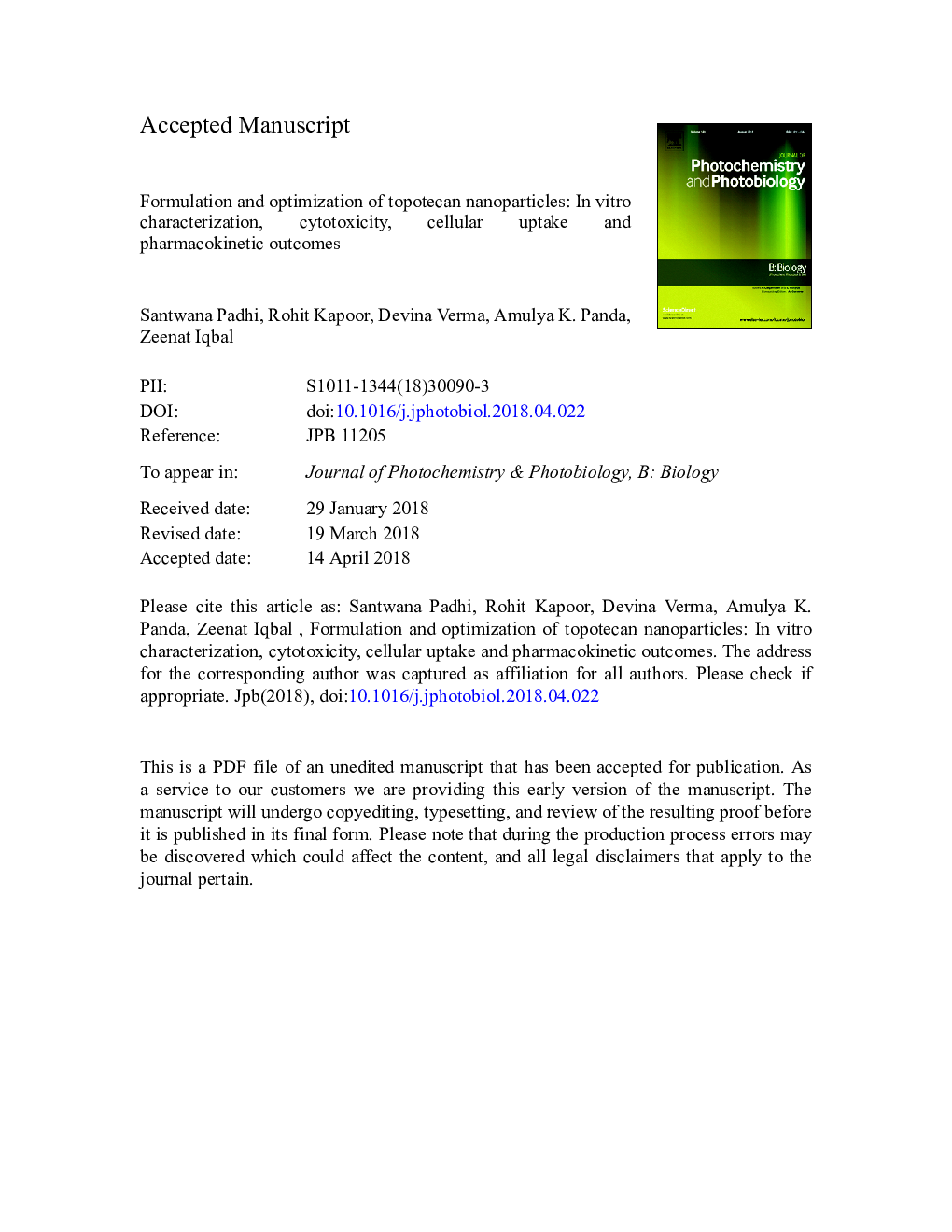| Article ID | Journal | Published Year | Pages | File Type |
|---|---|---|---|---|
| 6493276 | Journal of Photochemistry and Photobiology B: Biology | 2018 | 33 Pages |
Abstract
The study focuses on widening up the therapeutic perspective of anti-cancer therapy by entrapping a hydrophilic anticancer drug, topotecan hydrochloride (TOPO) in biodegradable poly (lactide-co-glycolide) (PLGA) matrix to form topotecan nanoparticles (TOPO NPs) by a double emulsion solvent evaporation technique. Statistical optimization using Box-Behnken design showed that sonication time of primary emulsion for 120â¯s, drug: polymer ratio of 1:12.65, organic phase: external aqueous phase ratio of 1:2.82 and 0.5% w/v of polyvinyl alcohol in the drug containing phase produced TOPO NPs with a size of 243.2â¯Â±â¯4â¯nm and an entrapment efficiency of 60.9â¯Â±â¯2.2%. TOPO NPs illustrated sustained release of TOPO for a week in phosphate buffer saline (PBS) at simulating physiological (pHâ¯7.4) and acidic tumor microenvironmental (pHâ¯6.5) conditions. A dramatic increase in cellular uptake with a corresponding enhanced cytotoxic potency was also displayed by TOPO NPs against human ovarian cancer cells (SKOV3) over time as compared to native drug, TOPO. These findings were further supported by the enhancement of bioavailability (13.05 fold) conferred by TOPO NPs from the in vivo pharmacokinetic study. The study represents a logistic approach for formulating TOPO NPs which can be used as an effective drug delivery system for the treatment of ovarian cancer.
Related Topics
Physical Sciences and Engineering
Chemical Engineering
Bioengineering
Authors
Santwana Padhi, Rohit Kapoor, Devina Verma, Amulya K. Panda, Zeenat Iqbal,
